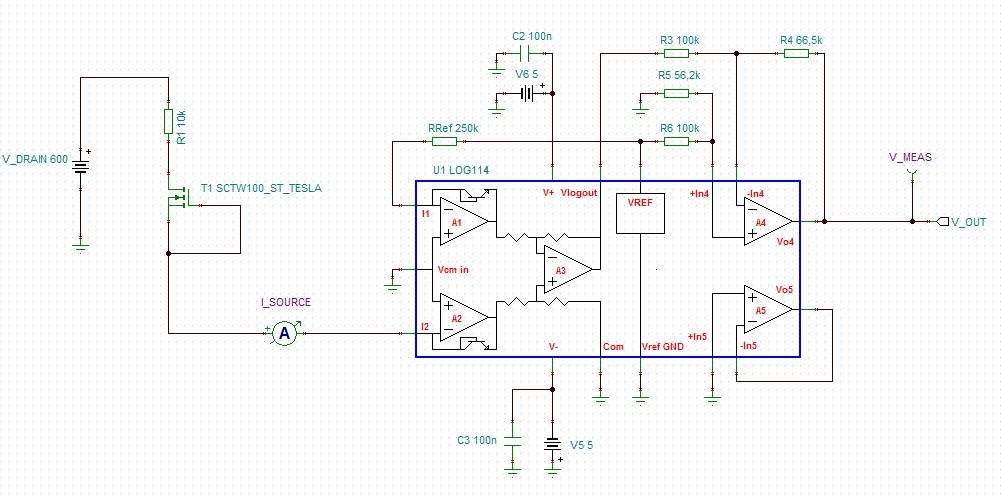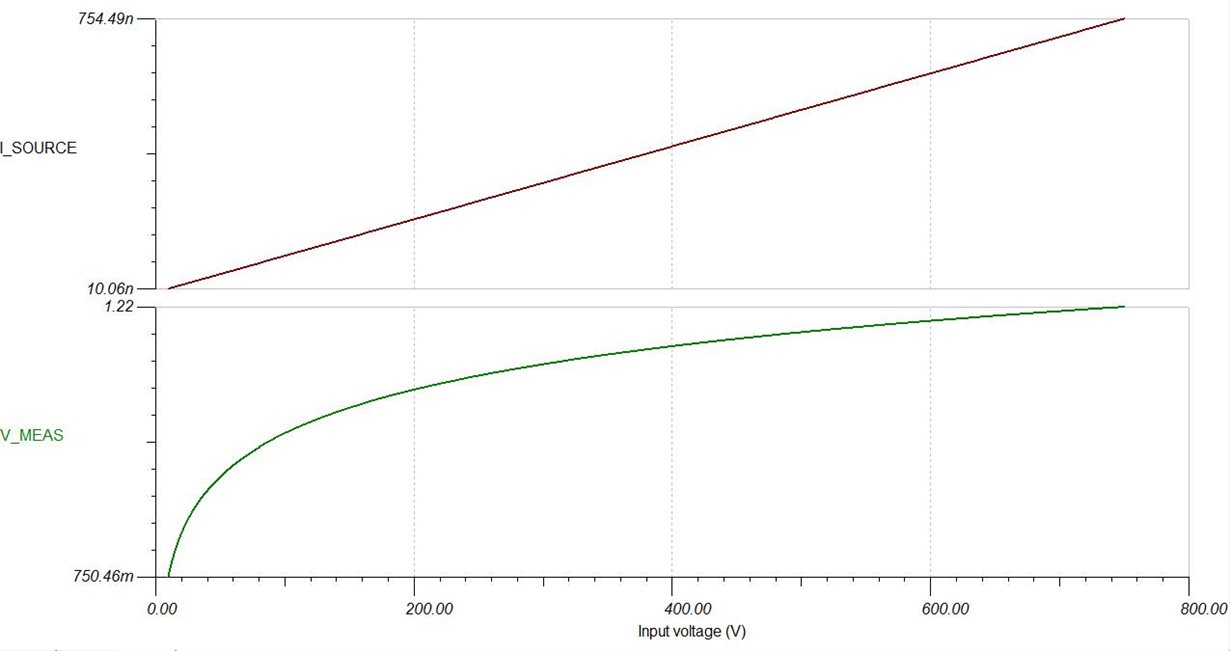Hi,
I am trying to use LOG114 to measure a small quiescent current of a power MOS. I started working using the datasheet dual-supply configuration and the simulations gave quite good results using a reference current (I1) of 10uA (VREF = 2.5V RRef = 250K).
After this I tried to build a small circuit to evaluate its "real" behaviour and I found out for current values above 2uA everything works fine but for current values lower than 2uA I get negative, "fluctuating" VOUT values:
- I = 0,4uA - VOUT = -0,581V
- I = 0,5uA - VOUT = -0,484V
- I = 1uA - VOUT = -0,250V
- I = 2uA - VOUT = 1,240V
- I = 5uA - VOUT = 1,413V
- I = 10uA - VOUT = 1,488V
I guess there is something to be tuned on A4 Op Amp input/feedback resistances. How can I improve the circuit to get positive stable output values on the whole range (10nA - 1mA)?
Thanks,
Enrico





